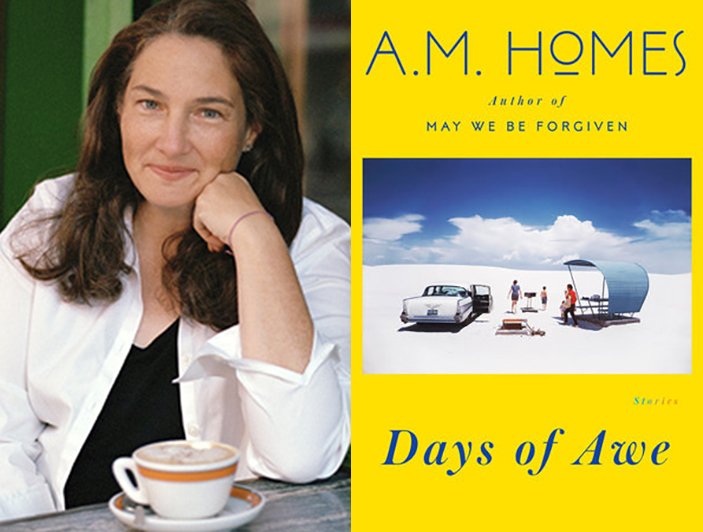This week’s installment of Ten Questions features A. M. Homes, whose story collection Days of Awe, published today by Viking, “exposes the heart of an uneasy America...exploring our attachments to one another through characters who aren’t quite who they hoped to become, though there is no one else they can be.” Homes is the author of the memoir The Mistress’s Daughter and the novels This Book Will Save Your Life, Music for Torching, The End of Alice, In a Country of Mothers, and Jack, as well as the story collections The Safety of Objects and Things You Should Know. She lives in New York City.

A. M. Homes, author of Days of Awe (Viking).
1. How long did it take you to write the stories in Days of Awe?
The stories in this collection took twelve years—stories accrue over time. I don’t sit down to write a collection of stories. I have ideas for them that can take years to form and there is a compression to storytelling, the sense that the story is already in progress by the time the reader comes to it—which means that I, like, know what it’s all about before diving in.
And there’s also an editorial/curating process—we build the collection—so once I have six to eight stories I like, I start to think about the balance, of voices within the stories, about narrative threads, ideas that appear in multiple stories—and sometimes we put a few stories aside and I write one or two more. There’s a moment when you know it’s getting close—which is very exciting. For me that was last summer. I was in Oxford, England, and knew I had two stories to finish: “Days of Awe,” the title story, which I’d literally been carrying with me for almost ten years, and “The National Caged Bird Show,” which had been with me for almost two years. Finishing those was thrilling and they’re two of my favorites in the book.
2. Where, when, and how often do you write?
In a perfect world I write daily, starting at about 6 AM. I wake up early, I go into my office and start writing. And then around 1 PM I join the rest of the world.
But as we know it’s not a perfect world, so I often have to fight to carve out work time—a writer’s calendar should be empty—but when most of us look at an empty calendar we think, “Great time to make a dentist appointment.” So it’s a struggle, learning to say no to things.
3. What was the most surprising thing about the publication process?
How long it takes. The lead time is about a year.
4. Where did you first get published?
My first publications were in Folio, a student publication at American University, and the Sarah Lawrence Review and then On Our Backs, the first women-run erotica magazine, founded in 1984. They published a story of mine called “72 Hours on a Towel.”
5. What are you reading right now?
Red Notice: A True Story of High Finance, Murder, and One Man's Fight for Justice by Bill Browder and The Largesse of the Sea Maiden by Denis Johnson. And I love reading history, I love biography. I’m a huge nonfiction fan.
6. If you were stuck on a desert island, which book would you want with you?
Kelly’s Textbook of Internal Medicine. I’m practical and I have a good enough imagination to otherwise entertain myself.
7. Who is the most underrated author, in your opinion?
Joyce Carol Oates.
8. What is the biggest impediment to your writing life?
Time.
9. What trait do you most value in your editor or agent?
Honesty and a sharp red pencil.
10. What’s the best piece of writing advice you’ve ever heard?
Write the truth according to the character—from Grace Paley, who was my teacher at Sarah Lawrence College.







